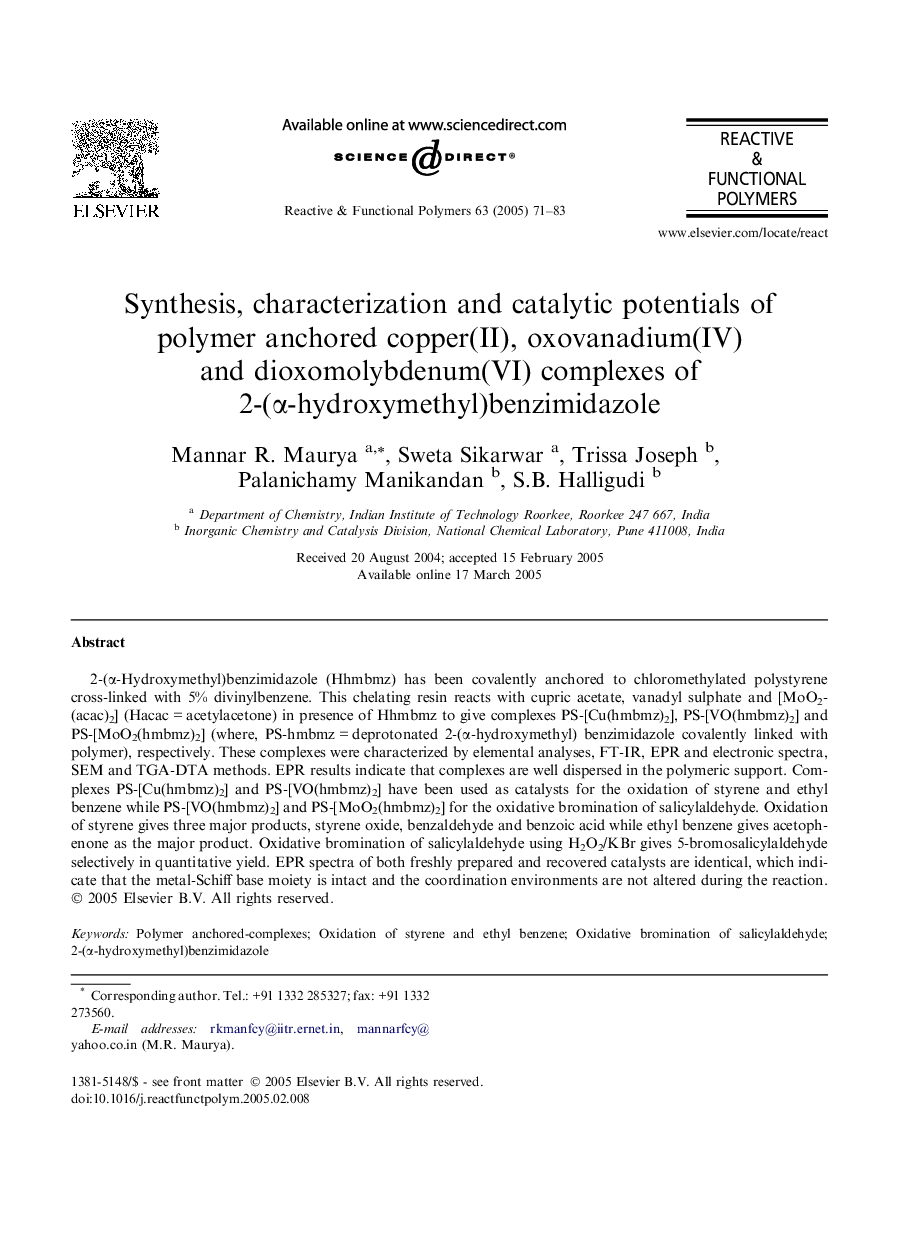| Article ID | Journal | Published Year | Pages | File Type |
|---|---|---|---|---|
| 9562715 | Reactive and Functional Polymers | 2005 | 13 Pages |
Abstract
2-(α-Hydroxymethyl)benzimidazole (Hhmbmz) has been covalently anchored to chloromethylated polystyrene cross-linked with 5% divinylbenzene. This chelating resin reacts with cupric acetate, vanadyl sulphate and [MoO2(acac)2] (Hacac = acetylacetone) in presence of Hhmbmz to give complexes PS-[Cu(hmbmz)2], PS-[VO(hmbmz)2] and PS-[MoO2(hmbmz)2] (where, PS-hmbmz = deprotonated 2-(α-hydroxymethyl) benzimidazole covalently linked with polymer), respectively. These complexes were characterized by elemental analyses, FT-IR, EPR and electronic spectra, SEM and TGA-DTA methods. EPR results indicate that complexes are well dispersed in the polymeric support. Complexes PS-[Cu(hmbmz)2] and PS-[VO(hmbmz)2] have been used as catalysts for the oxidation of styrene and ethyl benzene while PS-[VO(hmbmz)2] and PS-[MoO2(hmbmz)2] for the oxidative bromination of salicylaldehyde. Oxidation of styrene gives three major products, styrene oxide, benzaldehyde and benzoic acid while ethyl benzene gives acetophenone as the major product. Oxidative bromination of salicylaldehyde using H2O2/KBr gives 5-bromosalicylaldehyde selectively in quantitative yield. EPR spectra of both freshly prepared and recovered catalysts are identical, which indicate that the metal-Schiff base moiety is intact and the coordination environments are not altered during the reaction.
Related Topics
Physical Sciences and Engineering
Chemistry
Organic Chemistry
Authors
Mannar R. Maurya, Sweta Sikarwar, Trissa Joseph, Palanichamy Manikandan, S.B. Halligudi,
